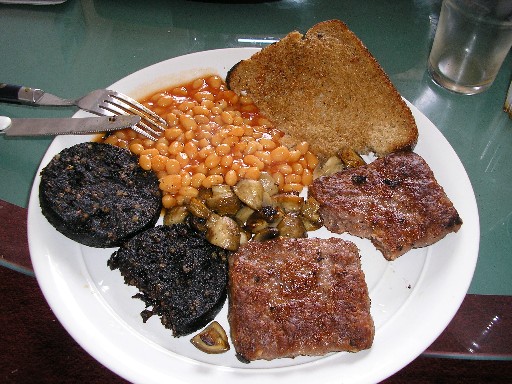Facts About Black pudding
Black pudding, a traditional blood sausage from the United Kingdom and Ireland, is a distinctive culinary delight that has endured through the ages. Crafted from pork blood, pork fat or beef suet, and grains such as oatmeal, oat groats, or barley groats, it is seasoned with herbs like pennyroyal to enhance its flavor profile. The term "pudding" is derived from the French "boudin" and the Latin "botellus" meaning "small sausage." This type of sausage is one of the oldest known, historically linked to the Martinmas slaughtering season.
The traditional method for making black pudding involves mixing fresh blood with fat, rusk, and seasonings, then filling a casing before boiling it. Although pork blood is commonly used today, sheep or cow blood was also traditionally employed. Recipes for black pudding can differ significantly depending on the region, with various areas of the UK and Ireland incorporating their unique blends of oats, barley, herbs, and spices.
Black pudding enjoys popularity in regions such as the Black Country, West Midlands, North West England, and Scotland. It is a beloved component of a full breakfast and is also featured in innovative dishes like black pudding ice cream or paired with scallops. Nutritionally, black pudding is rich in protein, zinc, and iron, although it can also be high in saturated fat and salt.
One of the most enjoyable and quirky events celebrating this dish is the World Black Pudding Throwing Championships, held annually in Ramsbottom since the 1980s. Participants compete by tossing black puddings at stacks of Yorkshire puddings, drawing thousands of competitors and spectators each year. Another event, the Bacup Food and Black Pudding Festival, has also celebrated this traditional food in Bacup in previous years.
Whether you are enjoying it as part of a hearty breakfast or participating in a whimsical festival, black pudding remains a cherished and iconic part of British and Irish culinary heritage.

 United Kingdom
United Kingdom